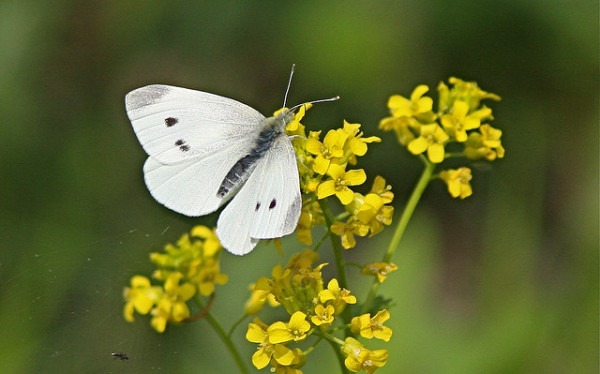Item Link: Access the Resource
File: Download
Date of Publication: June 22, 2015
Year of Publication: 2015
Publisher: National Academy of Sciences
Author(s): Patrick P Edger, Hanna M Heidel-Fischer, Michaël Bekaert, Jadranka Rota, Gernot Glöckner, Adrian E Platts, David G Hecker, Joshua P Der, Eric K Wafular, Michelle Tang, Johannes A Hofberger, Ann Smithson, Jocelyn C Hall, Matthieu Blanchette, Thomas E Bureau, Stephen I Wright, Claude W dePamphilis, M Eric Schranz, Michael S Barker, Gavin C Conant, Niklas Wahlberg, Heiko Voger, J Chris Pires, Christopher W Wheat
Journal: Proceedings of the National Academy of Sciences of the United States of America --PNAS
Volume: Early Publication Online
Coevolutionary interactions are understood to have generated much of the diversity on Earth, but how did the innovations driven by these arms-races come to be? Patrick P Edger and colleagues look at the interactions between plants and butterflies to better understand the mechanisms behind the diversifying innovations.
Abstract: Coevolutionary interactions are thought to have spurred the evolution of key innovations and driven the diversification of much of life on Earth. However, the genetic and evolutionary basis of the innovations that facilitate such interactions remains poorly understood. We examined the coevolutionary interactions between plants (Brassicales) and butterflies (Pieridae), and uncovered evidence for an escalating evolutionary arms-race. Although gradual changes in trait complexity appear to have been facilitated by allelic turnover, key innovations are associated with gene and genome duplications. Furthermore, we show that the origins of both chemical defenses and of molecular counter adaptations were associated with shifts in diversification rates during the arms-race. These findings provide an important connection between the origins of biodiversity, coevolution, and the role of gene and genome duplications as a substrate for novel traits.
The views and opinions expressed through the MAHB Website are those of the contributing authors and do not necessarily reflect an official position of the MAHB. The MAHB aims to share a range of perspectives and welcomes the discussions that they prompt.
